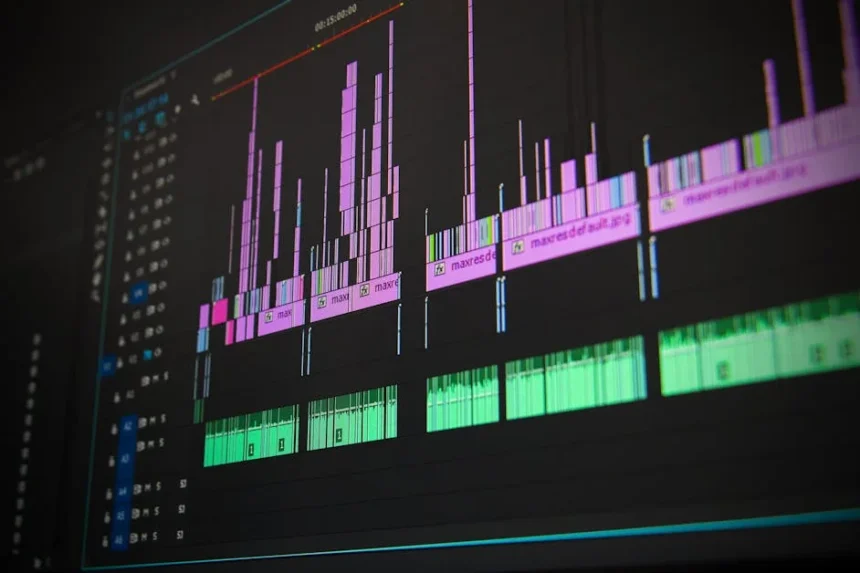Introduction
In today’s digital world, producing engaging video content is more vital than ever. As attention spans shorten and competition for viewers’ time grows, content providers must continuously explore for new ways to catch and hold consumer attention. Text-to-video technology is a fast-growing trend in the world of content development. This powerful technology enables producers to turn written content into captivating visual narratives, transforming the way videos are created. In this blog article, we will look at the power of text-to-video technology and how it is changing the content development landscape.
Text-to-video technology, or TTV, is a cutting-edge technique that transforms written text into video material. This technology analyses text using powerful algorithms and generates related visuals, such as animations, photos, and video clips. TTV may be used to generate a variety of videos, including educational explainers and intriguing storytelling pieces.
What is Text-to-Video Technology?
Text-to-video technology, or TTV, is a cutting-edge technique that transforms written text into video material. This technology analyses text using powerful algorithms and generates related visuals, such as animations, photos, and video clips. TTV may be used to generate a variety of videos, including educational explainers and intriguing storytelling pieces. TTV may select important visuals and assemble them into a cohesive video, complete with voiceover, music, and other aspects, after analyzing the text to discover essential themes and concepts. This not only saves time and resources, but also enables artists to make high-quality videos that successfully communicate their message and engage their intended audience.
How Does Text-to-Video Technology Work?
Text-to-video uses natural language processing (NLP) and artificial intelligence (AI) to convert textual information into entertaining visual material. The procedure starts with an examination of the input text, in which the technology finds major themes, ideas, and concepts. It then finds relevant visuals, such as photos, animations, and video clips, that correspond to the text. These visuals are then combined into a cohesive film that includes voiceover, music, and other elements to increase the overall impact and engagement. The result is a professional-looking video that effectively conveys the original text’s meaning in a visually appealing manner.
The Benefits of Text-to-Video Technology
Efficiency: One of the most important advantages of text-to-video technology is its efficiency. Rather than spending hours painstakingly developing visuals, producers may use TTV to produce videos in a fraction of the time. This enables producers to concentrate on producing intriguing storylines and engaging material rather than becoming mired down in the technical parts of a video production house.
Scalability: TTV is extremely scalable, allowing creators to create a huge number of videos fast and affordably. Whether you’re making content for a small or large audience, TTV can help you scale your video production efforts without breaking the bank.
Accessibility: TTV makes video production more accessible to a wider spectrum of artists, even those with limited resources or technical expertise. TTV allows anyone to create professional-looking videos, regardless of background or expertise level.
Engagement: Videos made with TTV are frequently more entertaining and visually appealing, allowing artists to capture and maintain audience attention. TTV can help you make films that stand out in a competitive digital market by combining spectacular visuals and compelling storytelling strategies.
Versatility: TTV may be used to create a wide range of videos, from educational content to marketing materials, making it an adaptable tool for creators in any field. Whether you want to educate, entertain, or inspire your audience, TTV can help you make your ideas come to life in an engaging and visually appealing way.
How to Use Text-to-Video Technology Effectively
When employing text-to-video (TTV) technology, choosing the correct tool is critical. Consider how easy the tool is to use, what features are accessible, and how it fits into your workflow. A tool that is tailored to your specific requirements and goals can help you maximise the benefits of TTV.
Quality should never be sacrificed when using TTV. While technology might speed up video creation, make sure the images and audio are excellent quality and relevant to the subject. This attention to detail will improve the overall viewing experience while keeping viewers engaged.
Personalisation gives your movies a personal touch, even when utilising automated technologies like TTV. Consider include aspects that reflect your individual style and brand identity. This personal touch might help your videos become more relatable and engaging to your audience.
Finally, encourage experimentation and ongoing learning. TTV is a versatile tool that offers numerous possibilities. Experiment with various strategies and styles to see what works best for your target audience. With time and experience, you will be able to master the art of generating interesting TTV videos.
Conclusion
To summarise, text-to-video technology is a huge improvement in the realm of content creation, providing authors with a strong tool for bringing their ideas to life in a visually appealing way. TTV automates the process of making videos from text, saving time and resources while also opening up new opportunities for narrative and audience involvement. As this technology advances, we may expect to see even more novel uses and applications in the field of content creation. From educational films to marketing efforts, TTV has the ability to transform how we communicate and engage with our audiences. As a creator, integrating text-to-video technology can help you remain ahead of the curve and develop content that speaks to your audience in a meaningful way.





